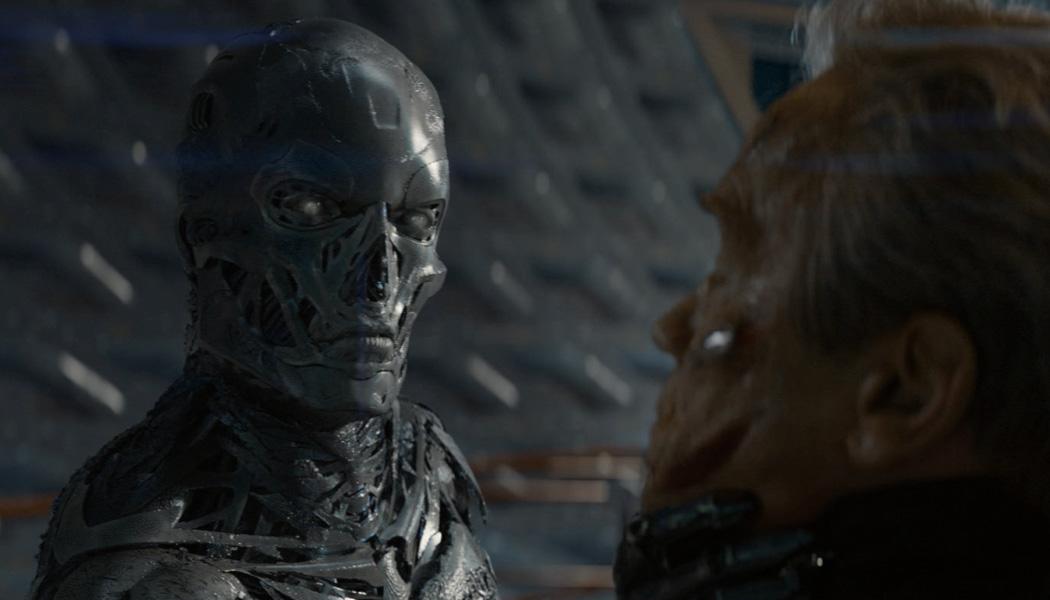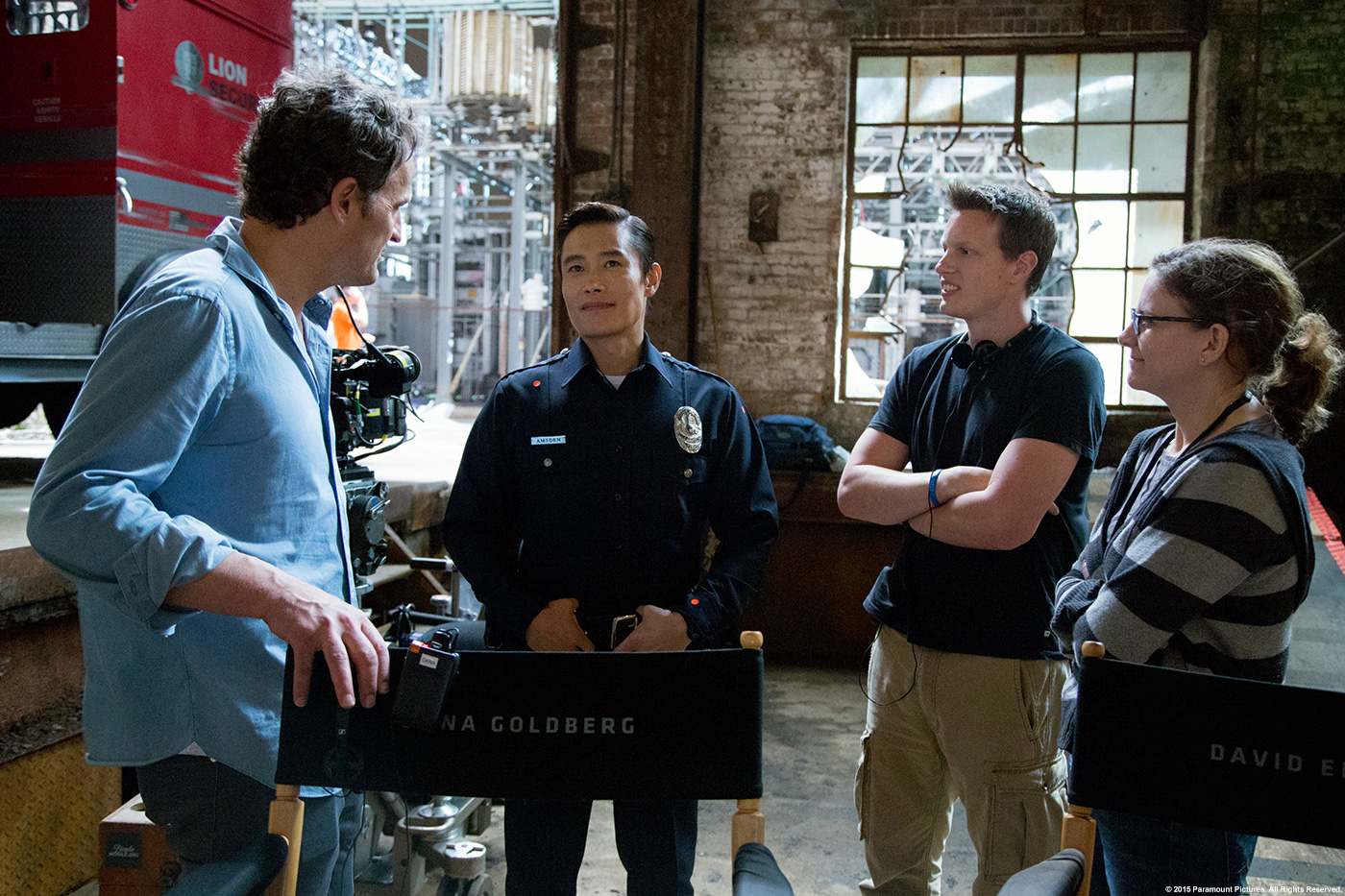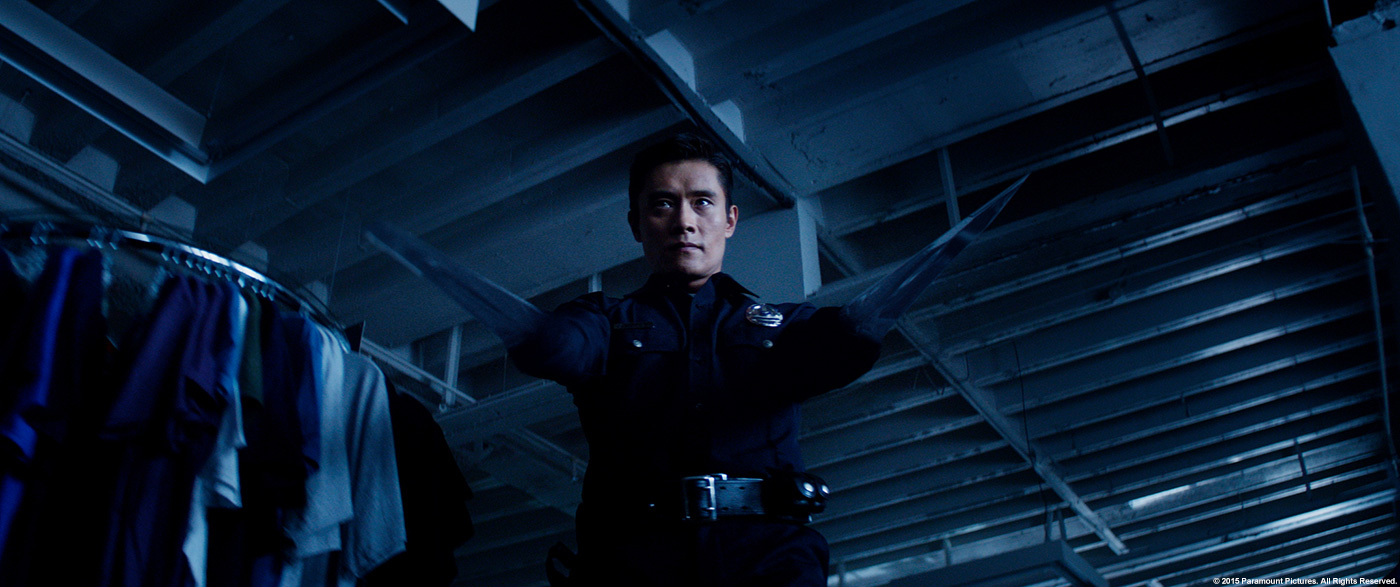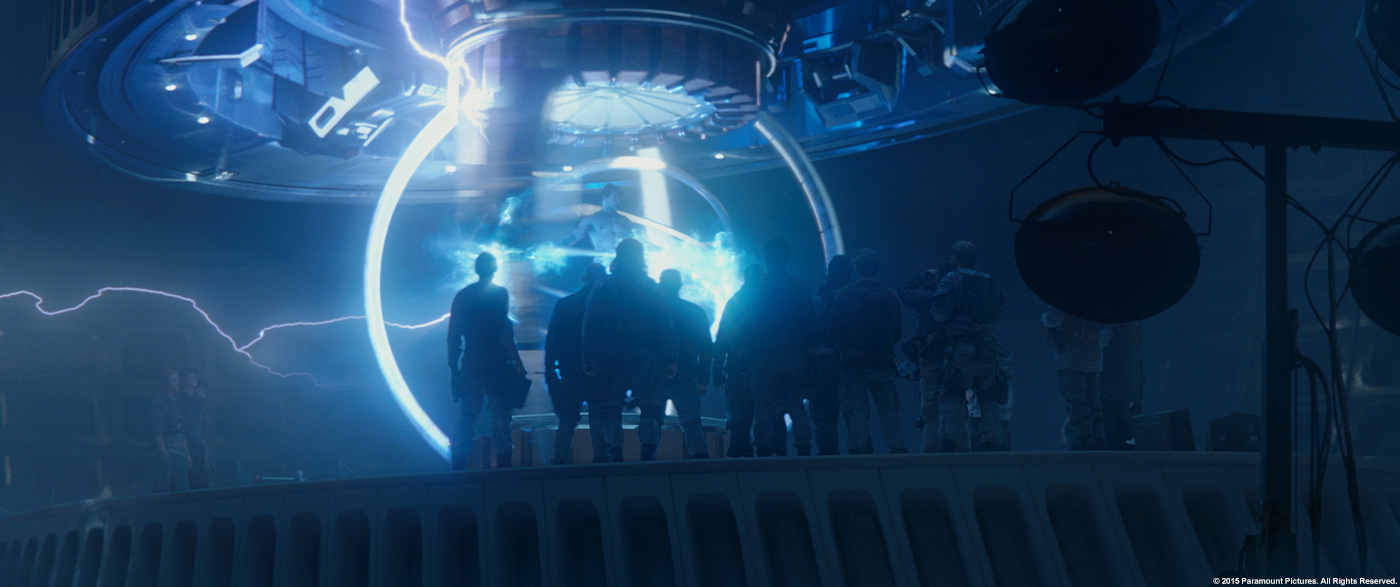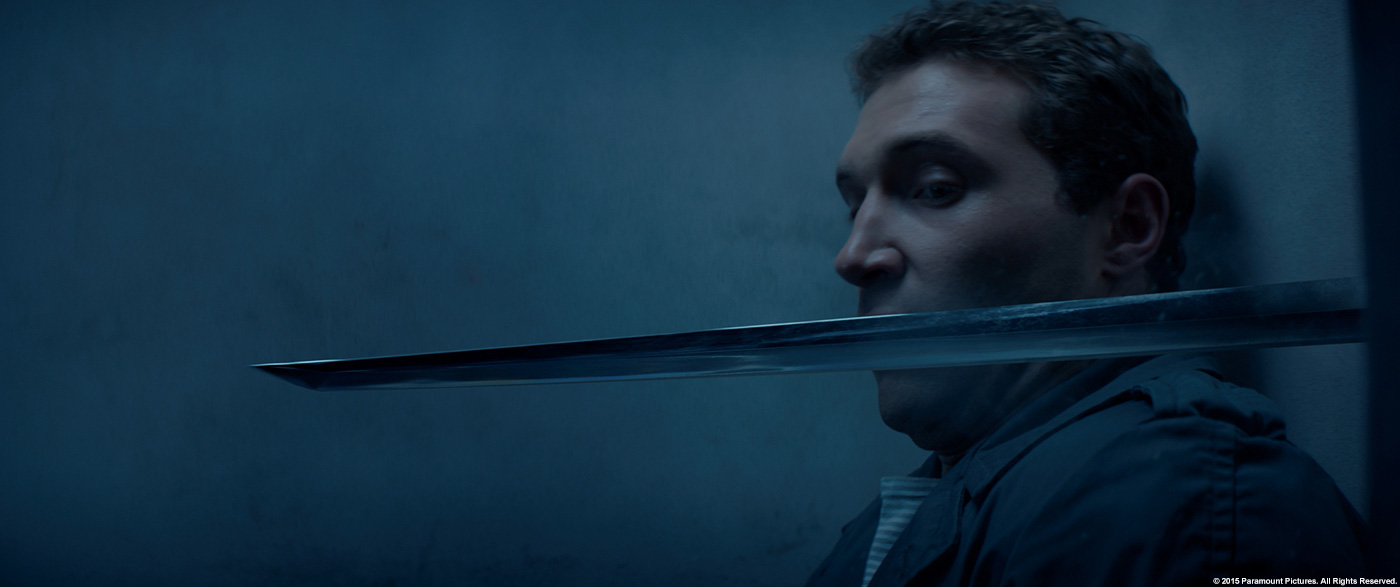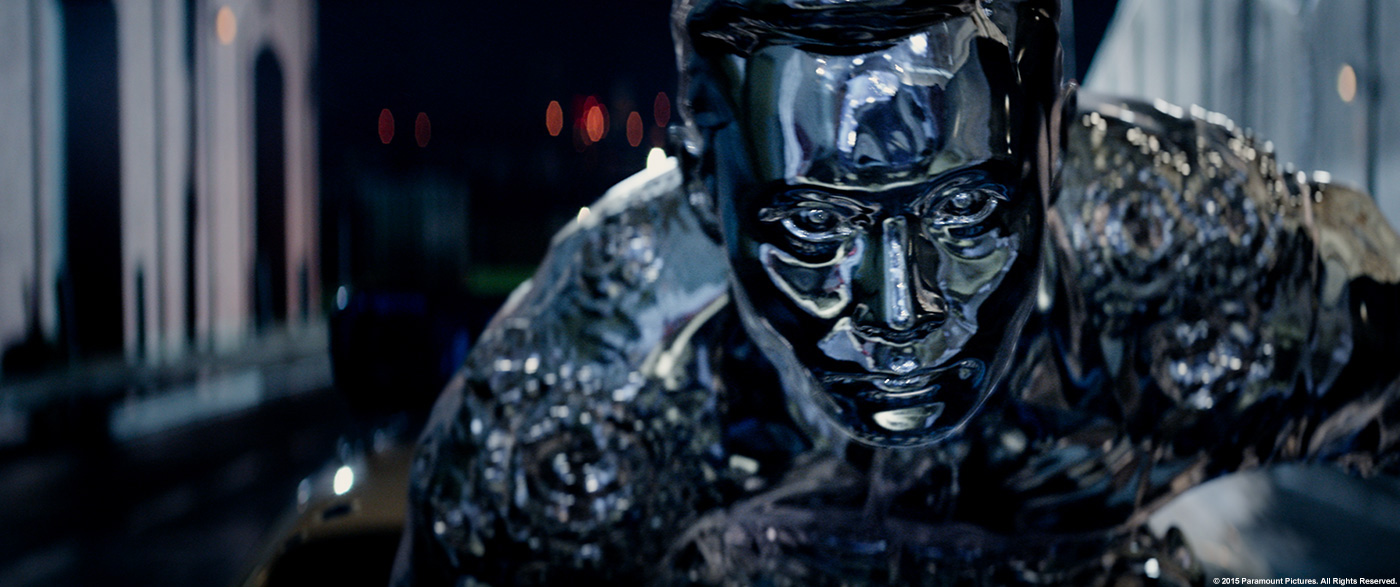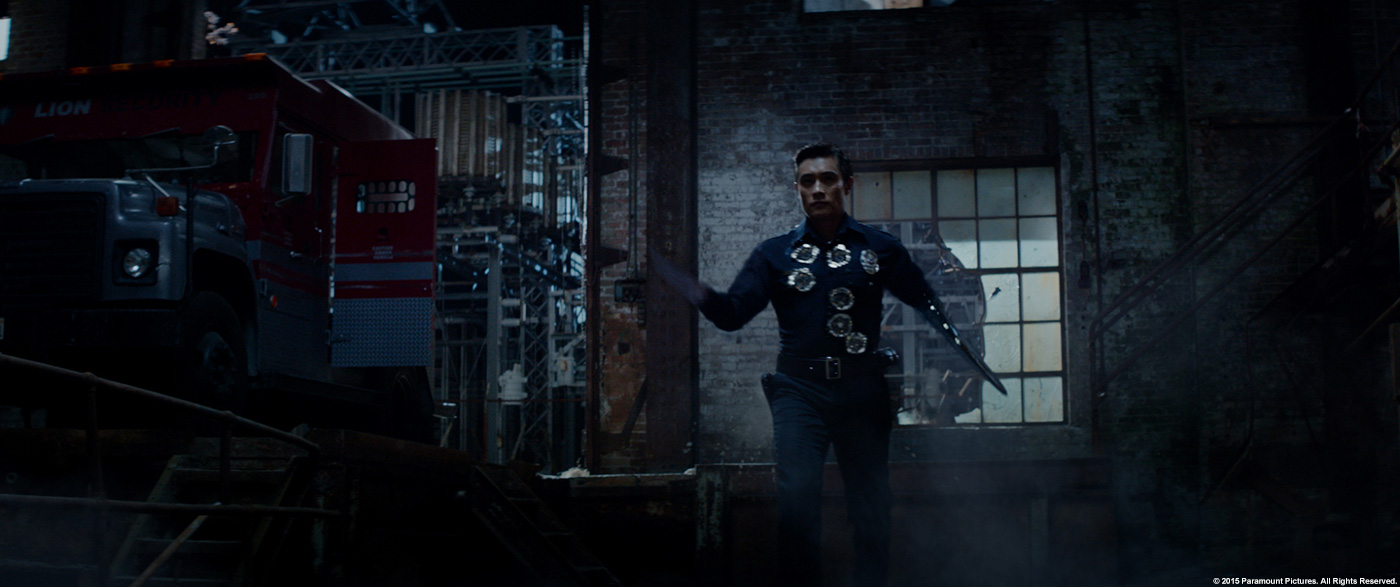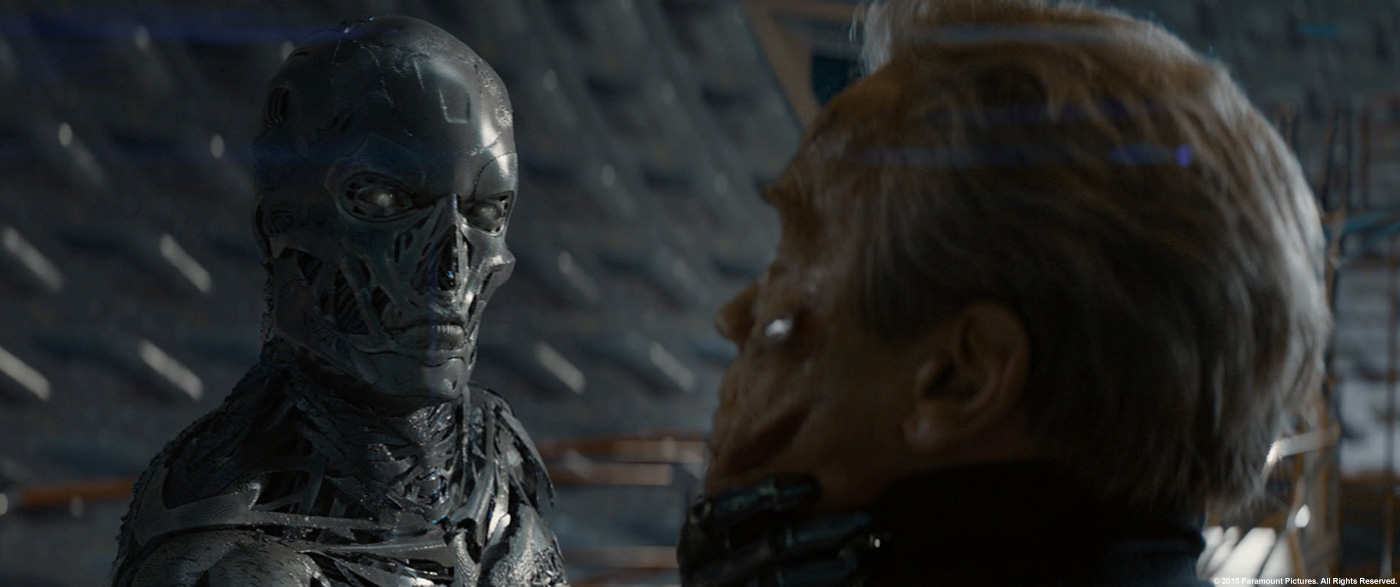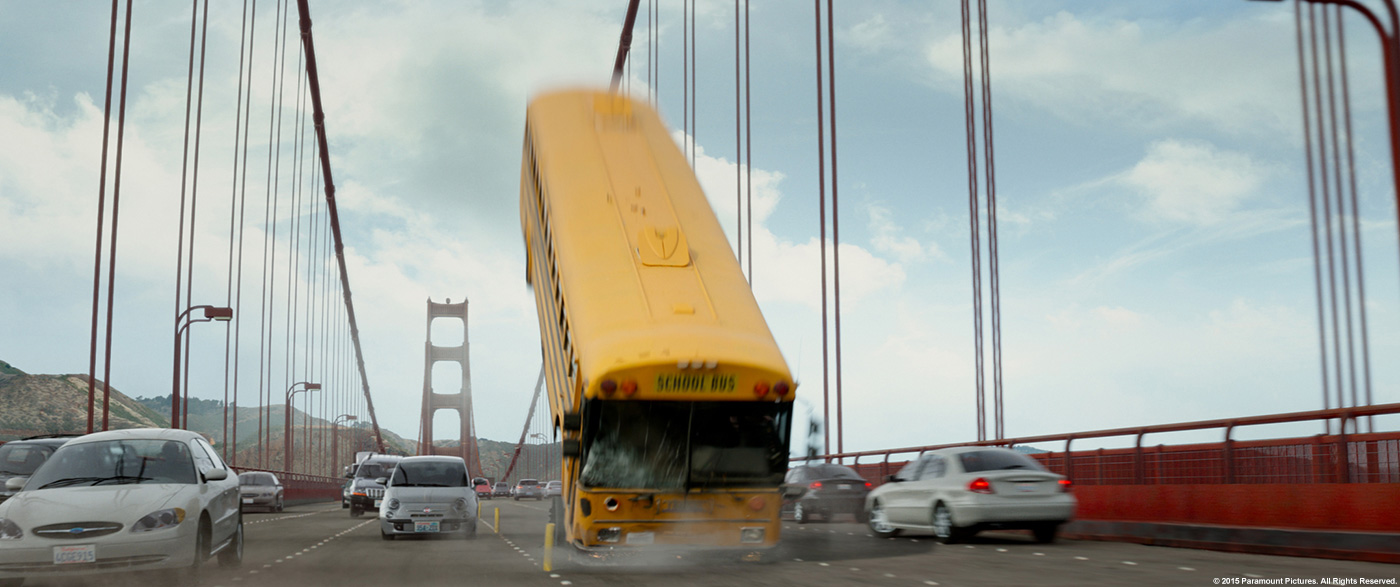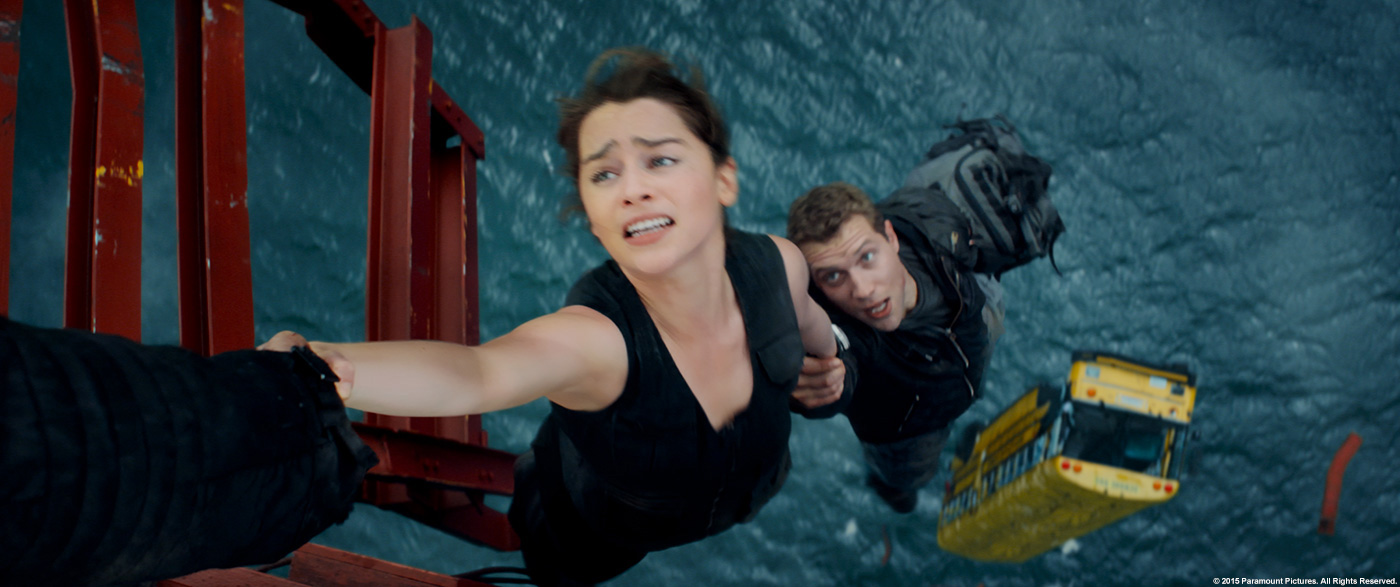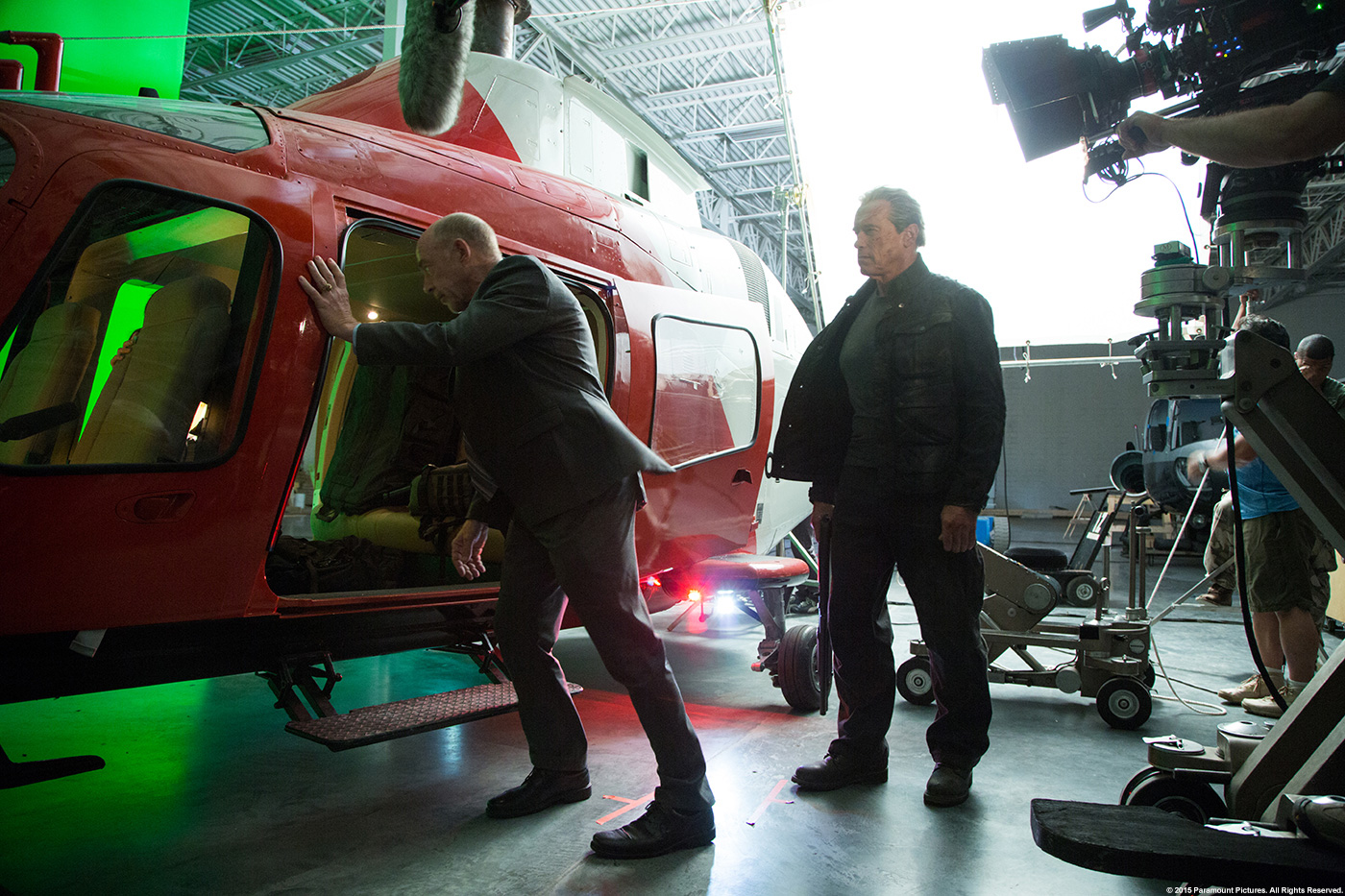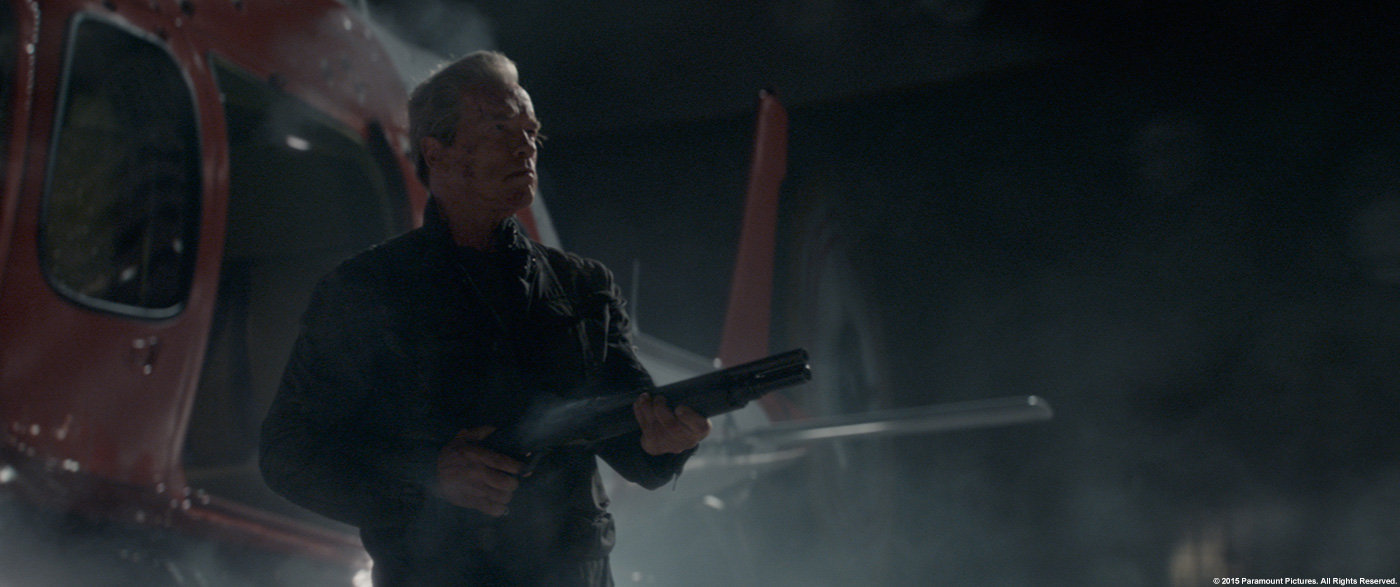Pete Bebb began his career in the VFX on PITCH BLACK at Double Negative in 2000. He worked on many projects such as DIE ANOTHER DAY, BATMAN BEGINS, THE BOURNE ULTIMATUM or The Dark Knight. As a VFX supervisor, he took care of the effects of films like INCEPTION and THE DARK KNIGHT RISES.
What is your background?
I originally trained as a Product Designer, decided that was not for me and looked for a way of combining my love of films with computing – VFX seemed the natural progression.
How did you and Double Negative get involved on this show?
Our client approached us with a script and a simple breakdown of the work and we start pitching for it basically. Usually this involves doing concept, models, anim and going even as far as test shots to pursue the creative/technical aspects of the show. The client usually has some idea of what work they would like you to pursue which is helpful for you to able to concentrate your efforts. We have an Art Dept in house so we basically start initial work on the show prior to it being awarded. If the client believes you are on the right track and the work is encouraging, and of course the price is right, then fingers crossed the award will be finalised.
How was the collaboration with director Alan Taylor?
I had the pleasure of working with Alan Taylor on THOR 2 so it was encouraging to have him involved on this show as well. Alan is easy going, very creative and approachable. Makes life a little easier from our perspective.
What was his approach about the visual effects?
Alan has a good understanding of VFX and where they are best utilised. As with everything we are firm believers in attempting to shoot as much as you can and using VFX only where absolutely necessary.
How was this collaboration with Production VFX Supervisor Janek Sirrs?
Janek is one of the most experienced and talented client VFX supes I’ve worked with, it was a real learning curve and a challenge. It was great working with him and a good a laugh which is important when you’re pulling the sort of hours that these films dictate.
What was the work done by Double Negative?
The work we did is as follows: T1000, T3000, T5000, Golden Gate, TDD chambers, Helicopter Chase, CyberDyne, End Battle – about 850 + shots.
Can you describe one of your typical day during the shooting and the post?
Well a typical day on set usually starts at 7 or earlier depending on the shoot the day before. Then depending on what we’re shooting, be it VFX heavy or not, then there’ll be a whole host of onset stuff to do. From data acquisition of either set pieces or scanning and photography of actors. Or advising on set as to what is required for us to do the VFX per shot/set up. Sometimes two units are going – principle and second – then I may have to cover either of those so VFX have a presence on set. This all equates to no sleep, plenty of stress and a massive amounts of donuts. Somewhere in there I have to remember to call my wife also. Film shoots can be quite intense.
How did you approach the recreation of the mythic T1000?
We made sure to refer back to the original character always. Although there was an initial plan to try and ‘update’ it, this was only necessary in certain scenes which required it – (spoiler alert) like the demise of the T1000 in the Acid Bath scene – this was some very complex FX work which required very senior artists and a shed load of time to do… Signature T1000 shots were often done in a very similar fashion to the original in order to recreate the look established in T2.
Can you explain in detail about its creation?
A mass of concept and sculpting was done on this character – it being an amorphous body of metal capable of recreating any shape, there is a lot of scope for artistic sculpted form. Hence us doing a multitude of concept, ZBrush sculpts and FX to acquire that T1000 look. We were also very conscious of the appearance of the material, giving it a little more imperfection was more successful in our opinion. A few scratches, discolouration and slight denting really helps with getting that real world metal finish.
How did you handle the rigging and animation challenges for the T1000?
Many approaches were adopted depending on the shots – bespoke tweaks on standard rigging was used in some scenarios and on the other hand complete FX solutions were done for other shots. There really was not a ‘single approach fits all’ for this character. Very tough.
Can you tell us more about the shading and rendering of the T1000?
Obviously, with the T1000 being chrome, it is essentially all about reflection. A Red camera was employed on set with a 6mm fish eye to obtain all the correct reflections. On top of this the shading of the metal was key and, as described before, we were very keen to sell imperfection and a more real world metallic finish as opposed to perfect chrome which can tend to look too CG.
The movie introduces new Terminators. What references and indications did you received from the director and the production?
The brief was quite simple – they wanted a Terminator based around nanocyte technology, be recognisable as John Connor and be something unique that we have never seen before.
Can you tell us more about the design of the T3000 and T5000?
The concept behind the T3000 was to essentially create a living breathing nanocyte version of John Connor, whereby the design has evolution determined by the simple principle of ‘form follows function’. So after much divergent thinking and designing, from exploring lineage from the previous terminator models to creating designs that were almost pure aesthetics we came down to the above design conclusion. Consequently you have a design which is a perfected human form with the strength and versatility of nanocyte tech. There is a finite amount of material hence him not gaining scale as this would be too obvious and something more akin to a T800 robot. The T3000 is better via strength of material, intelligent design and the symbiosis of man and machine. The perfect soldier.
The T5000 is the a different beast altogether, it is based off ionisation of air creating a form in mid air that appears as a light sculpture essentially. The projection beams are more lasers that burn the air creating the T5000. Again only the the form that is required to convey communication was required hence less detail the limbs and more in the face. Quite subliminal and subjective.
Can you explain in detail about their creation?
The T3000 was built from the bottom up as a completeFX form. Knowing full well that it had to be able to do literally anything then we had to plan for it to be art direct-able, complex and efficient,. The client wanted a render busting character and they got it. The character was essentially a living breathing entity made up from half a billion hairs. Which allowed us to do whatever we wanted with it. A huge creative and FX undertaking. In direct opposition to this the T5000 was far more simple in concept – it being a little more subjective and being sculpted light there was a simple particle system with some fluid dynamics and a whole lot of comp love gave life to this character.
How did you handle the various transformations of the T3000?
As with all major FX work there is a hell of a lot of processes prior to the final image. From model tweaks and anim right up to major machine busting FX sims which run for days. Depending on the shot requirements we built the T3000 to be able to cope with all creative possibilities. For example the phasing of the T3000 through the Guardian in the end battle was a culmination of anim on 6 rigs, FX for all those rigs from cloth to hair and muscles plus FX anim on top of that. The premise being that the T3000 can magnetically control his form via fields and project portions of his nanocyte form through the Guardian like a multitude of clay-mores going off – the mere motion of the T3000 from A to B is a weapon essentially.
There is beautiful transformation when he is on fire outside the bunker. Can you tell us more about these shots?
Well we shot a multitude of plates on set from various passes with the principle, fire passes and clean passes. Then in the post we combine these with the CG JC and work it up with FX passes. The shot was relatively short but on seeing it progress the transformation was extended as the passes created were very interesting, combined with the performance of Jason, the shot was very effective.
What was the main challenges with these new Terminators?
The main challenge was designing something that suited all creative requirements and was also respectful of the original design ethos from T1 and T2. Tough challenge but very enjoyable.
Can you explain in details about the creation of the Golden Gate bridge sequence?
Production created a 500′ section of the bridge on a back lot behind the production offices in NOLA. This was then used for all in-cam car and bus action. The set was scanned and photographed and built in CG. We also repeated the same data acquisition process on the actual Golden Gate bridge too and then combined the two models together in post. This enabled us to do accurate BG reconstruction of the plates from the shoot. It also enabled us to supplement these plates with additional car action and/or complete CG shots if required.
How did you created the huge flip of the bus?
The flipping bus was done in camera on the back lot – we replicated it in CG for additional angles required in post but essentially it is the real deal.
Can you tell us more about the shots of Arnold getting hit by a car and when get out of the police car in movement?
SFX built a buck and rammed a police car into it but this was a little unpredictable and the idea somewhat matured in post. So the shot had to be created in full CG, David was keen to obtain good weight in the anim and have the 800 pound robot stop the police car in a specific fashion – have it rear up, skid and come to a halt.
How did you approach and created the helicopter chase?
Once principle photography had wrapped in SF, the VFX unit stayed on for another month obtaining as much lidar scanning, plate and stills photography to completely recreated SF for the helicopter chase. A huge amount of data was compiled both in day light and night time conditions. We also had to cover ourselves for the chase as being from a multitude of heights, hence shooting from street level, condor cranes and roof tops. Terabytes of data. We also had a VFX camera unit shooting plates as well so not all shots are completely built from CG.
Can you explain in detail about the creation and destruction of the Cyberdyne buildings?
Cyberdyne headquarters was essentially Oracle headquarters in SF. We were there for a lidar scanning and photography shoot in April 2014 gaining enough material to build the complex in CG. There was a time limit as Larry Ellison’s America Cup winning yacht was due to be helicopter lifted in – which would have made documenting the complex a little more difficult. Hence getting it done as soon as possible. The team at Oracle were very accommodating.
Was there a shot or a sequence that prevented you from sleep?
Most of them.
What do you keep from this experience?
A bigger belly, less hair and a mild heart murmur.
What was your feeling to be involved on the Terminator universe?
A real privilege – both T1 and T2 made a huge impression on me and creating a Terminator from scratch has been a real design opportunity which we relished.
How long have you worked on this show?
From Jan 2014 to May 2015.
How many shots have you done?
In total we did over 850 plus shots.
What was the size of your team?
The team was up to 500 crew at one point.
What is your next project?
Going on my honeymoon which was somewhat delayed then enjoying summer in the village where I live. Cricket, beer, walking the dog and spending time with my wife – job done 😉
As for my next film – TBD.
What are the four movies that gave you the passion for cinema?
THE EMPIRE STRIKES BACK, RAIDERS OF THE LOST ARK, JASON AND THE ARGONAUTS and ALIENS. There are many more but that is the first four that come to mind.
A big thanks for your time.
// WANT TO KNOW MORE?
– Double Negative: Dedicated page about TERMINATOR GENISYS on Double Negative website.
© Vincent Frei – The Art of VFX – 2015


